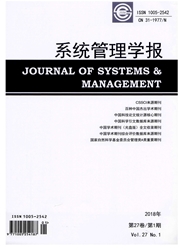

 中文摘要:
中文摘要:
首次将期末二次订购策略与期前二次订购策略相结合,在考虑制造商可以灵活采用昂贵和便宜这两种生产模式以应对销售商的不同订单需求的前提下,建立了需求信息更新点与期末紧急订购联合决策的供应链协调模型,并且详细探讨了采用多种契约以实现供应链的协调运作。通过研究发现:随着短缺量延期供给率的增加,①销售商一方面将需求信息更新时刻提前,另一方面减小其第1次订购量,而制造商则也相应地降低其第1次生产量;②分散决策下的系统期望利润与集中决策下的系统期望利润之差越来越小,这表明,短缺量延期供给可以有效减小"双重边际效应",延期供给的短缺量越大,供应链的"双重边际效应"越小。
 英文摘要:
英文摘要:
This paper first integrates the end-of-season twice-ordering policy with pre-season twiceordering policy.Under the assumption that the manufacturer utilizes two production modes in response to the buyer's two different orders,we develop a supply chain coordination model with joint decision of demand information updating time point and end-of-season emergency ordering.Furthermore we discuss how to design multiple contracts to achieve the channel coordination.From the analysis,we find that as the backlogging rate increases,(i)the buyer will move the updating moment forward and at the same time decrease his/her first order quantity,and the manufacturer also decreases its first production quantity correspondingly;(ii)the difference of expected profits between the decentralized-and centralized-system becomes less and less,which indicates that the shortage backlogging can effectively eliminate the double marginalization.The more the backlogging quantity is,the less the double marginalization effect.
 同期刊论文项目
同期刊论文项目
 同项目期刊论文
同项目期刊论文
 Coordination of cooperative advertising models in a one-manufacturer two-retailer supply chain syste
Coordination of cooperative advertising models in a one-manufacturer two-retailer supply chain syste Equilibrium analysis of distribution channel structures under power imbalance and asymmetric informa
Equilibrium analysis of distribution channel structures under power imbalance and asymmetric informa 期刊信息
期刊信息
